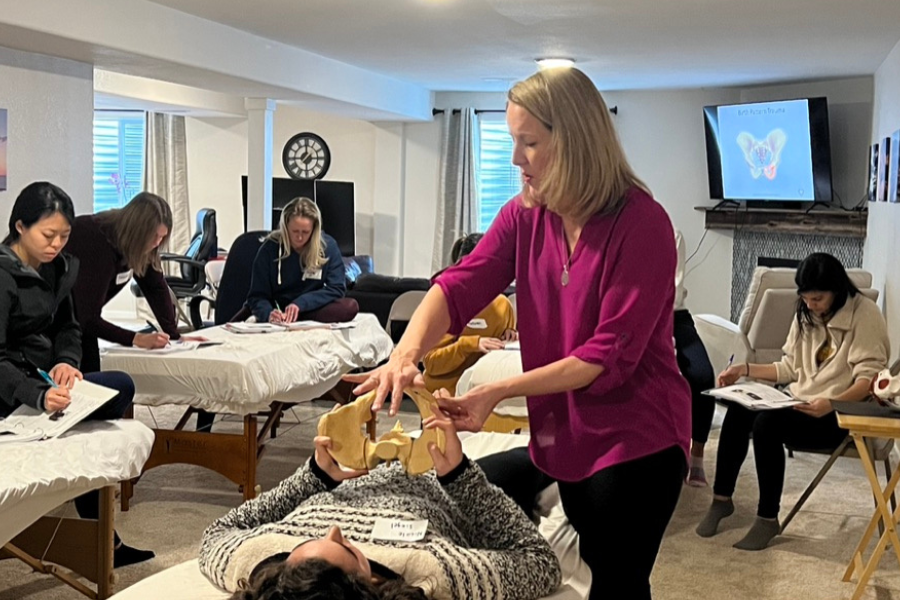How birth impacts the sacrum and what to do about it.
How Birth Impacts the Sacrum and What to Do About It
As we all know, the bones of the pelvis move during vaginal birth. The ischial tuberosities splay laterally, and the sacrum and coccyx go into flexion to open up the pelvic outlet. In many cases, the bones of the pelvis don’t return to their normal position. Instead, they can get stuck in this birthing position, which I call the “Open Birthing Pattern.”
Let’s explore how the Open Birthing Pattern impacts the sacrum
I discovered the sacrum has two distinct patterns. One is true sacral flexion, where the coccyx remains in a midline position. The other is when the sacrum is in flexion, with a right-side bent position. This is when the sacral base is higher on the right-hand side, creating decreased mobility in the right sacral iliac joint. The coccyx is off to the right-hand side, with increased tone in the right coccygeus muscle.
To differentiate between these two sacral positions, you have to palpate the coccygeus muscles either externally or internally. If the sacrum is in proper sacral flexion in the midline, the coccygeus muscles will have increased tone bilaterally. Therefore, it’s easier to treat if you find it externally. Still, if you miss it and then palpate the coccygeus muscles internally and find both sides have increased tone, it’s best to stop your intravaginal work, and correct the sacral flexion pattern externally first, then resume your intravaginal treatment.
If you find only one side coccygeus with increased tone, you should reassess the sacral base level and see if one side is higher than the other. Also, check to see if the coccyx is in midline or shifted off to one side.
To release the sacrum from a true midline flexion pattern, you apply a posterior-to-anterior force to the lower third of the sacrum until good mobility is restored in the motion. You will initially find it resistant to this motion, and as the sacrum moves back into its normal position, the movement improves. A full release is complete when the coccygeus muscle tone normalizes.
Treating the Open Birthing Pattern
There is a two-step treatment process for the side-bent sacral flexion pattern that encourages the sacrum back into the midline. Watch this YouTube Video to learn the first step. You can learn how to treat this pattern and more in our new online course Treating the Postpartum Pelvis which is open for registration on September 22, 2023.
We must remember that the pelvis bones get adjusted and opened as babies come out. They don’t always come back together after birth. Identifying the open birthing patterns and learning how to facilitate their closure can help relieve your postpartum client’s back pain. Also, treating the bones of the pelvis before doing intravaginal work makes your treatment of the pelvic floor muscles so much easier, as the muscles are affected by the bones’ positions. Therefore, it would be best to mobilize the pelvic bones before doing intravaginal work.
About the Author: Lynn Schulte is a Pelvic Health Therapist and the founder of the Institute for Birth Healing, a pelvic health continuing education organization that specializes in prenatal and postpartum care. For more information, go to https://instituteforbirthhealing.com

